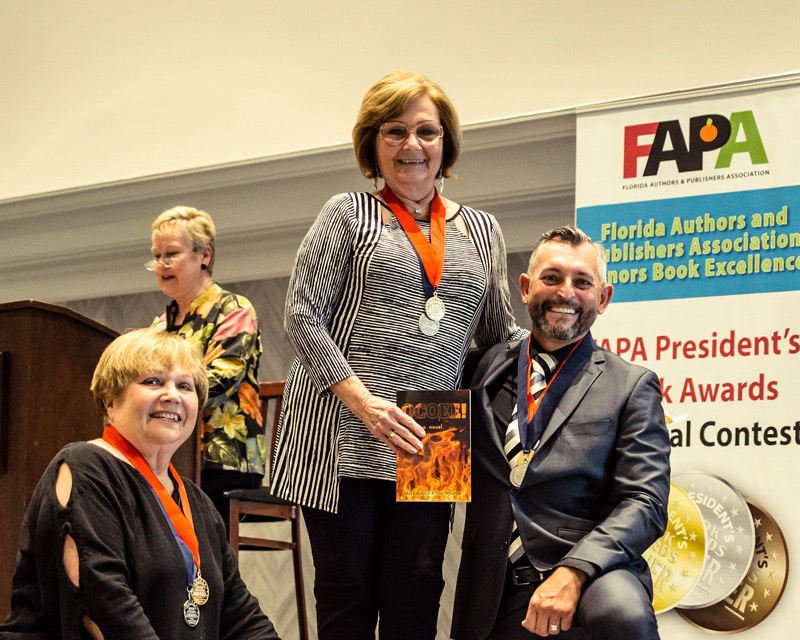ABOUT THE AUTHORS
Myra Kinnie and Gail Waxman

Beginning in the 1940s, we grew up in the small all white town of Ocoee located in Central Florida. Since our lives were centered in this West Orange County community, we accepted our daily lives as being normal and typical. In many ways, we grew up as innocent and ignorant as Georgia, our protagonist. We did realize that there were no blacks in our town. Those who worked there during the day were gone by sundown. No black person would be caught in Ocoee after dark. While Southerners are proud of their history and keep much of it alive orally, we never heard any facts, only idealized gossip, about the riot that occurred on Election Day, 1920. Teachers sharing local history in our schools never mentioned it.
As time passed and we grew into adulthood our interests in uncovering the truth of the historical past of Ocoee became more important to us. It turned almost into an obsession. We utilized all the local sources that were available to us to begin putting the pieces together that surrounded the Ocoee Riot. Much to our surprise, we discovered that Ocoee was not the only town in Florida that experienced much unrest and upheaval in the black communities.
Starting in 2008, after years of silence, some public discussions started to take place about the Ocoee 1920 Election Day prior through the efforts of a reconciliation task force in the community. Talks and symposiums were held in several locations in Ocoee. In one meeting at a local bookstore, tempers began to flare when the word “massacre” was used to describe the riot. Some members of the task force whose family members had been directly involved in the events that happened said the word “massacre” was too strong. Despite 80 years having passed, it was still a sore subject for many.
The advent of the computer age assisted us in expanding our historical research. New information concerning the issues that surrounded the volatile 1920 Presidential Election throughout Florida and the United States became readily accessible. The culmination of this information was important in our understanding of what led to the tragic events of the Ocoee Massacre and its aftermath.
After years of research, we decided to write this book to shed some light on what happened. We decided on creating a fictionalized story, told from the perspective of a young, white girl who bore witness to what occurred. The account from the point of view of the black participants and victims remains to be written.
We have strived to be as accurate as we can in describing the lives of the actual people who lived in and around the Ocoee area during the period from 1913 through 1927. Any factual errors we may have committed are the result of having to chose among conflicting accounts of what happened and our own oversights. We hope that they will not diminish the intent or meaning of our narrative.
We believe the time has come to draw back the veil for good that has shrouded the Ocoee Riot in obscurity and hidden the reality of what happened from too many people for too long.
We continue to believe in Voltaire’s dictum that “To the living we owe respect, but to the dead we owe only the truth.”
Myra Kinnie & Gail Waxman
Ocoee, Florida


